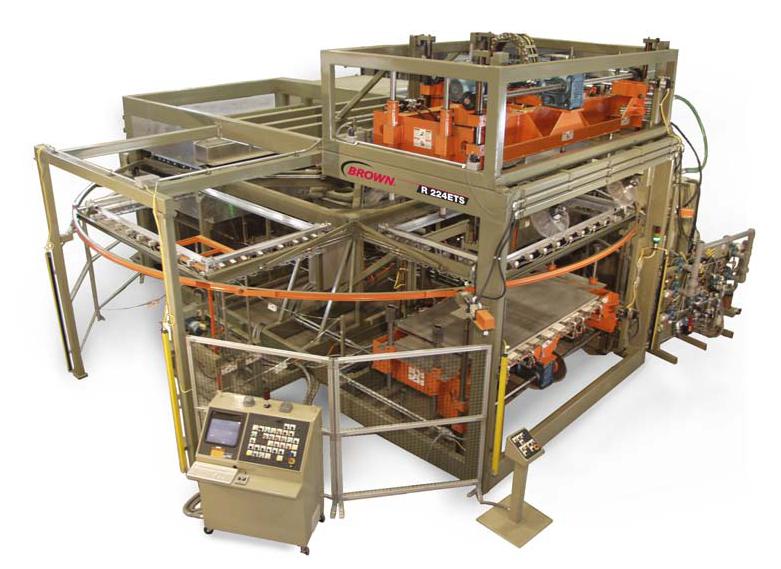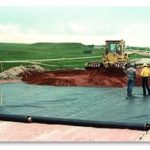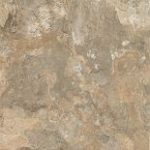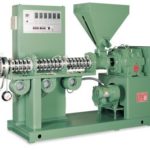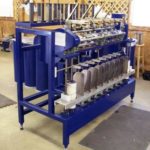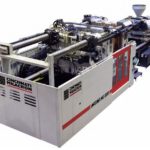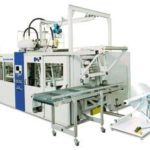Polymer processing involves creating structures using polymers by changing their viscosity and rheological properties and shaping them. To do this, polymers are heated to a melt-state or viscoelastic state and then shaped or molded and cooled. Depending on the application, there can be multiple steps in the process to prepare a polymer to enter the final piece of shaping equipment.
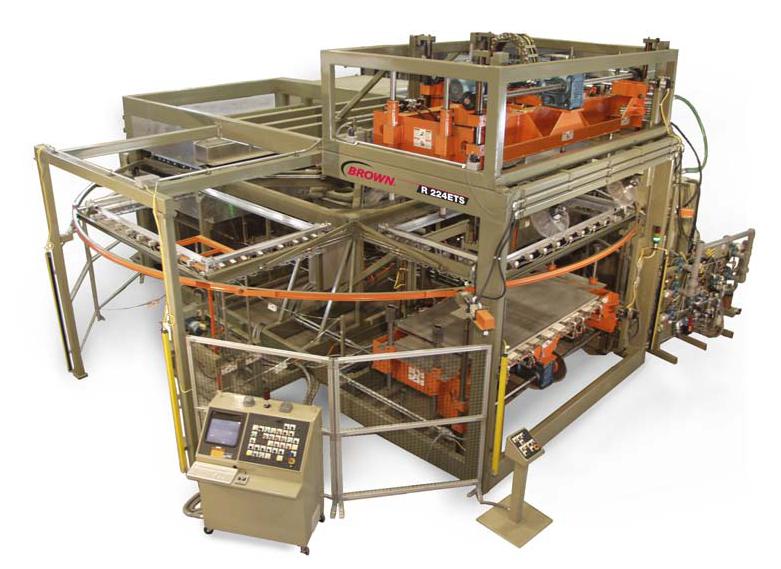
Polymer Product Manufacturing Steps
Polymer processing is the second step in the manufacture of polymer products:
General Information
The type of equipment used to process a polymer is largely dependent on the end-use of the product and the thermal properties of the polymer, such as thermal conductivity and melting temperature. For example, the processing machine must be able to both apply enough heat to melt the entirety of a polymer feed and also be able to efficiently conduct heat through itself.
The melt flow index (MFI) was created to help match the physical properties of a polymer to the type of equipment used to process it. The MFI measures the quantity of polymer that flows through a capillary in a die of standard diameter at a given temperature with a gravimetric force applied over a timespan of 10 minutes. Low MFIs indicate high viscosity materials and in turn high molecular weight polymers. Conversely, high MFIs represent low molecular weight systems. Lower MFI polymers will require more heat and energy to shape. Extruders and extruder presses offer good resolutions to both of these issues.
Conventional Process Steps
The type of equipment used to process a polymer is largely dependent on the end-use of the product and the thermal properties of the polymer, such as thermal conductivity and melting temperature. For example, the processing machine must be able to both apply enough heat to melt the entirety of a polymer feed and also be able to efficiently conduct heat through itself.
Polymer Processing Equipment
Blow Molding
Blow molding is used to produce sturdy plastic containers and parts of all sizes.
Blown Film
Film blowing is used to manufacture thin sheets of plastics from a melted polymer.
Calendering
Calendering is used to produce a variety of sheet-like polymer products. In particular, it is the leading method for processing vinyl.
Extruders
Extruders are used to produce plastic products such as flexible pipes and plastic sheets. They can also be used to mix materials.
Fiber Spinning
Fiber spinning is used to make synthetic fibers for use in many industries.
Injection Molding
Injection molding is the most common molding process after extruders. It is widely used to process thermoplastics and thermosets.
Powder Coating
In powder coating, a dry polymer powder is applied to an object. Powder coating is less harmful to the environment than traditional wet spray painting because it produces lower VOC emissions.
Reactive Polymer Processing
For thermoset polymer compounds, cross-linking between the growing polymer chains occurs during the polymerization reaction, so the production and processing steps need to be combined when working with these compounds.
Rotational Molding
Rotational molding is an economical way to produce hollow parts of all sizes.
Thermoforming
Thermoforming involves heating a sheet of thermosetting plastic material until it softens, then molding it into a desired shape.
Acknowledgements
- BROWN Machine LLC, Beaverton, MI; now part of BMG Solutions
References
- Agassant, Jean-Francois. Avenas, Pierre. Carreau, Pierre J. Vergnes, Bruno. Vincent, Michael. Polymer Processing, Principles and Modeling. 2nd Edition. Cincinnati, Ohio. Hanser Publications. 2017.
- Griskey, Richard G. Polymer Process Engineering. 1st Edition. New York, NY. Springer Science and Business Media, 1995, Print.
Developers
- Joel Holland

